6888th Central Postal Directory Battalion
(Women's Army Corps)
Prepared by Kathleen Fargey, AAMH-FPO/14 February 2014
In February 1945, warehouses in Birmingham, England, were filled with millions of pieces of mail intended for members of the U.S. military, U.S. Government personnel, and Red Cross workers serving in the European Theater. Airplane hangars held undelivered Christmas packages, and a constant stream of incoming mail added to the already massive backlog of letters and packages. Oftentimes the mail was addressed simply to "Junior, U.S. Army" or "Buster, U.S. Army." As Allied forces drove across Europe, ever-changing locations hampered mail delivery to servicemembers. With seven million Americans in the European Theater, many shared common names (7,500 were named Robert Smith). Servicemembers noticed that they weren't getting mail from home, and Army officials reported that the lack of reliable mail delivery was hurting morale. One general predicted that the backlog in Birmingham would take six months to process.
But who would take on this massive task? Under the heading of "Personnel problems," an Adjutant General's report stated that, "Since D-Day, and for a long time prior to that date, a shortage of qualified postal officers has existed within the [European] theater. The Postal Division continually sought to secure additional officers by requisition from the Reinforcement System and from the Zone of the Interior." Although there were personnel stationed at Birmingham to handle the mail, the system was in chaos.1
The Women's Army Corps (WAC) of the U.S. Army was created by a law signed by President Franklin D. Roosevelt on 1 July 1943. The WAC was converted from the Women's Army Auxiliary Corps which had been created in 1942 but did not have official military status. New WAC recruits underwent four to six weeks of basic training, which included a physical training program, often followed by four to twelve weeks of specialist training. First Lady Eleanor Roosevelt and civil rights leader Dr. Mary McLeod Bethune successfully advocated for the admittance of African-American women as enlisted personnel and officers in the WAC, although as in the rest of the Army, segregation prevailed. After several units of white women were sent to serve in the European theater, African-American organizations pressed the War Department to extend the opportunity to serve overseas to African-American WACs.
In November 1944, the War Department acquiesced.2 Despite slow recruitment of volunteers, a battalion of 817 (later 824) enlisted personnel and 31 officers, all African-American women drawn from the WAC, the Army Service Forces, and the Army Air Forces, was created and eventually designated as the 6888th Central Postal Directory Battalion, nicknamed "Six Triple Eight." The 6888th included a Headquarters Company for administrative and service support and Companies A, B, C, and D, each commanded by a captain or first lieutenant. Major (later Lieutenant Colonel) Charity Edna Adams (who took the surname Earley upon her marriage in 1949) was selected to command the battalion.3 The battalion was trained for their overseas mission at Fort Oglethorpe, Georgia: "They crawled under logs wearing gas masks and jumped over trenches," according to a Washington Post article of 26 February 2009. The women learned to identify enemy aircraft, ships, and weapons; to climb ropes; to board and evacuate ships; and to do long marches with rucksacks. In January 1945, the women traveled by train to Camp Shanks, New York, their embarkation point.4
On 3 February 1945, the first contingent of the battalion sailed for Britain. Their ship, the Ile de France, survived close encounters with Nazi U-boats and arrived in Glasgow, Scotland, on 14 February, where a German V-1 rocket exploded near the dock, causing the women to run for cover. They traveled by train to Birmingham, England. Within a few days of their arrival, they held a military parade for Lieutenant General John C. H. Lee, which was watched by a number of curious local citizens. A second contingent arrived in Birmingham from Scotland fifty days later.5
In Birmingham, the women of "Six Triple Eight" confronted warehouses stacked to the ceiling with letters and packages. These buildings were unheated and dimly lit, the windows blacked out to prevent light showing during nighttime air raids. Rats sought out packages of spoiled cakes and cookies. As it was a cold winter, the women wore long johns and extra layers of clothing under their coats while working in these warehouses. The unit members were organized into three separate eight-hour shifts so work continued around the clock, seven days a week. They tracked individual servicemembers by maintaining about seven million information cards including serial numbers to distinguish different individuals with the same name. The women dealt with "undeliverable" mail which was sent to their location for redirection. They investigated insufficiently addressed mail for clues to determine the intended recipient, and they handled the sad duty of returning mail addressed to servicemembers who had died. The women of the 6888th were initially the subject of a great deal of curiosity from the local citizens of Birmingham, who came to watch them at work. Major Adams received official greetings from a number of civilian and U.S. and British military officials. In time, many of the women of the 6888th made friends in the local community and found the locals to be polite and even friendly. The women were welcome in British public spaces and were sometimes invited into private homes for tea.6
The enlisted women were quartered in the old King Edward School, and the officers were quartered in two houses. None of these facilities was very warm during the winter. Quarters, the mess hall, and military recreational facilities were segregated by race and gender. Although male African-American Soldiers, along with white servicemen and women, had been allowed in a local club for enlisted American military personnel run by the American Red Cross, neither this club nor the American Red Cross hotels set up for WACS in London welcomed the African-American WACs. In response, Major Adams led the unit in a boycott of the alternative segregated facilities which the Red Cross offered. The women of the 6888th ran their own mess hall, hair salon, refreshment bar, and other recreational facilities. They experienced food rationing with daily portions of Spam.7
PhotoByRachelLarueFromArmyMilhttpwww.army.milmedia236766.jpg) Alyce Dixon, former member of the 6888th, in February 2012. She reached 107 years of age on 11 September 2014.
Alyce Dixon, former member of the 6888th, in February 2012. She reached 107 years of age on 11 September 2014.Source: U.S. Army, Photo by Rachel Larue
In her history of the Women's Army Corps, Mattie E. Treadwell wrote, "The unit was congratulated by the theater on its 'exceptionally fine' Special Services program. Its observance of military courtesies was also pronounced exemplary, as were the grooming and appearance of members and the maintenance of quarters."8 However, Treadwell and other writers refer to debates over the unit's efficiency, as some inspectors were not satisfied with the level of production. Personal prejudices may have been a factor in some inspectors' attitudes. Earlier in her military career, unit commander Major Charity Adams had been reprimanded by a colonel for "race-mixing" after accepting an invitation to a white Officers Club. When a male general came to inspect the unit, Major Adams prevented him from viewing the women's private rooms while some of them were sleeping. After headquarters and off-duty personnel of the unit were assembled in a formation as instructed, the general chastised Major Adams for not having all her troops present. When Major Adams attempted to explain that the women worked three different shifts and that she followed the orders she was given, the general cut her off and threatened to send a "white first lieutenant" to show her how to command the unit. Major Adams' famous reply, "Over my dead body, Sir," nearly earned her a court-martial, but the general was subsequently dissuaded from taking that course of action. By the time the same general visited the unit in France, his attitude had changed and he appreciated the 6888th's accomplishments.9 Additionally, a chaplain assigned to the unit at one period interfered with its operations by ordering unit members to report to his office for counseling, causing reports of women being absent without leave. The women of the 6888th found that they were the subject of some hostility and rumors impugning their character spread by both white and black male Soldiers who resented the fact that black women were allowed in the Army.10
Despite such treatment, the 6888th Central Postal Directory Battalion produced great results in Birmingham: With the new tracking system they created, the women processed an average of 65,000 pieces of mail per shift and cleared the six-month backlog of mail in three months. The women adhered to the motto of, "No mail, low morale," providing essential support for the U.S. military in the European theater by linking servicemembers to their loved ones back home. They achieved unprecedented success and efficiency in solving the military's postal problems.11
With the immense backlog in Birmingham gone, the 6888th Central Postal Directory Battalion sailed to France on 9 June 1945, shortly after V-E Day. They arrived in Le Havre, where they were shocked to find a city left in ruins by the Nazis, and traveled by train to Rouen, where they were invited to participate in a victory parade past the spot where Joan of Arc had been executed. The women were cheered and respected by the newly liberated French. The unit was quartered in the Caserne Tallandier, an old French barracks within a walled compound. The arrival of a significant number of American women on the Continent attracted the attention of both white and black U.S. servicemen, who "suddenly found that they had business in Rouen," and stepped-up security efforts were required to keep unauthorized personnel out of the 6888th's compound. After the unit's WAC Military Police were denied firearms, they trained in jujitsu, a martial arts form which proved effective in keeping out unwanted visitors.12
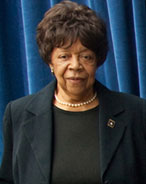 Mary Ragland, former member of the 6888th.
Mary Ragland, former member of the 6888th.Source: U.S. Army
The women of the 6888th now worked with male and female French civilians and with German POWs. They encountered another backlog of undelivered mail dating back as far as two to three years which again would take an estimated six months to process. Nonetheless, members of the unit were able to participate in recreational activities while stationed in France, including tennis, ping pong, softball, and basketball, sometimes competing against white WACs. Some of their teams traveled to other parts of France or Europe to compete in tournaments. The unit's basketball team was victorious in a tournament in Stuttgart, Germany, although they were initially denied seats on the segregated train. They immediately appealed to Lieutenant General John C.H. Lee, deputy commander of the European Theater of Operations, who delayed the train's departure to attach his special first class car for the members of the 6888th to travel in.13
While in Rouen, the 6888th experienced a tragedy. On 8 July 1945, PFC Mary J. Barlow and PFC Mary H. Bankston were killed in a jeep accident, and Sergeant Dolores M. Browne died on 13 July from injuries resulting from the accident. Since the War Department did not provide funds for funerals, the women of the 6888th pooled their resources to honor their deceased members. First Lieutenant Dorothy Scott found three unit members who had experience with mortuary work to take care of the bodies, and unit members paid for caskets. Memorial services were organized and held for the deceased, and Major Adams wrote to inform their families in the United States of their fate. Sergeant Browne, PFC Barlow, and PFC Bankston were buried with honors in the Normandy American Cemetery at Colleville-sur-Mer.14
After efficiently clearing the mail at Rouen, the 6888th moved to Paris in October 1945. Here, their officers were quartered in the Hôtel États-Unis, and the enlisted women were quartered in the Hôtel Bohy-Lafayette. They enjoyed a higher standard of living than in Rouen or Birmingham, with maid service and chef-cooked meals. With the end of World War II, however, the strength of the 6888th Central Postal Directory Battalion was reduced by nearly 300 personnel, with over 200 more women eligible for discharge in January 1946. The morale of the battalion suffered as the workload fluctuated and there were fewer women available to process an influx of holiday mail, and once again, they worked in unheated premises. In Paris, the 6888th also faced a new challenge: the theft of small packages and certain items from packages to supply a &"war-deprived populace." The women were forced to systematically search the local civilians they worked with in order to recover stolen items.15
In February 1946, the remainder of the unit returned to the United States and was disbanded at Fort Dix, New Jersey, without further ceremony. There were no parades, no public appreciation, and no official recognition of their accomplishments, although Charity Adams was promoted to Lieutenant Colonel upon her return to the U.S. The accomplishments of the 6888th in Europe encouraged the General Board, United States Forces European Theater to adopt the following premise in their study of the Women's Army Corps issued in December 1945: &"[T]he national security program is the joint responsibility of all Americans irrespective of color or sex" and &"the continued use of colored, along with white, female military personnel is required in such strength as is proportionately appropriate to the relative population distribution between colored and white races." 16
With the exception of smaller units of African American nurses who served in Africa, Australia, and England, the 6888th Central Postal Directory Battalion was the only African-American women's unit to serve overseas during World War II. As such, it has received greater attention in later years. In 1981, a few of the unit's veterans returned to Birmingham, England, where they were honored at a reception by the city's lord mayor. They then visited London, where they were greeted by civil and military officials, and Paris, where they were given a guided tour of the city. In 1979, the members of the 6888th attended a reunion in Cincinnati, Ohio, and the unit's veterans have attended several reunions held for African-American WACs.17
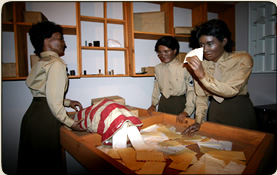 Wax figures in U.S. Army Women’s Museum exhibit on the 6888th Central Postal Directory Battalion.
Wax figures in U.S. Army Women’s Museum exhibit on the 6888th Central Postal Directory Battalion. U.S. Army Women’s Museum, Fort Lee, Virginia.
The history of the 6888th Central Postal Directory Battalion has been explored and celebrated in written accounts, documentaries, museum exhibits, and public ceremonies. In 1989, Charity Adams Earley, the former unit commander, published a memoir of her wartime experience. In June 1994, Dr. Brenda L. Moore, a sociology professor at the University at Buffalo (the State University of New York), published a study for the U.S. Army Research Institute for the Behavioral and Social Sciences entitled African American Women Who Served Overseas During World War II: Toward a Life-Course Analysis (ARI Research Note 94-21). In 1996, she published a book titled To Serve My Country, To Serve My Race: The Story of the Only African American WACS Stationed Overseas During World War II (New York University Press), based on the memoirs of and interviews with women who had served in the 6888th. In addition, the unit has been included in histories of women and of African Americans who served in World War II and in the U.S. military in general. Three members of the 6888th, former commander Charity Adams Earley, Mary Ragland, and Alyce Dixon, were interviewed for a documentary film " Invisible Warriors: African American Women in World War II" by Gregory S. Cooke, an English Department professor at Drexel University.18
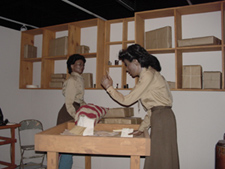
In 1996, the Smithsonian Institution' s National Postal Museum in Washington, DC, held a program honoring Charity Adams Earley as commander of the 6888th Central Postal Directory Battalion. On 18 October 1997, Earley was also honored at the dedication of the Women in Military Service for America Memorial at Arlington National Cemetery. The 6888th has been included in the exhibits and educational programs of the U.S. Army Women' s Museum in Fort Lee, Virginia. The 6888th's history is also maintained in records held by institutions such as the National Archives for Black Women's History in Washington, DC and the Library of Congress, which maintains the Charity Adams Earley Papers. In 2005, a public school named the Charity Adams Earley Girls Academy opened in Dayton, Ohio, where Earley had lived from 1949 until her death on 13 January 2002.19
One of the most prominent public events honoring the 6888th Central Postal Directory Battalion took place on 25 February 2009, again at the Women in Military Service for America Memorial at Arlington National Cemetery. Three surviving unit members, Alyce Dixon (then 101 years old, 107 years old as of 11 September 2014), Mary Ragland, and Gladys Shuster Carter, gathered for a 90-minute ceremony held by U.S. Army Freedom Team Salute, an official U.S. Army Commendation Program, to honor the 6888th. The 6888th veterans received certificates, letters of appreciation signed by the Secretary of the Army and the Army Chief of Staff, Army lapel pins, and Army decals. Retired Brigadier General Wilma Vaught, president of the Women in Military Service board of directors, made remarks recalling the unit's history. The event was covered in the press, including The Washington Post and CNN. At this event, Gladys Shuster Carter evoked one of the greatest legacies of "Six Triple Eight" by calling attention to women, particularly African-American women, currently serving in the U.S. military: "You are standing on our shoulders." 20
Gallery


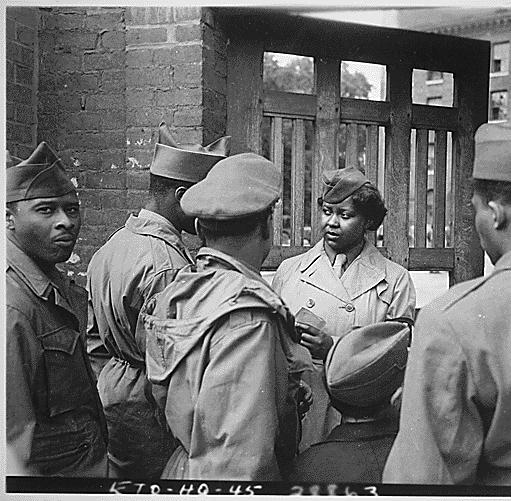
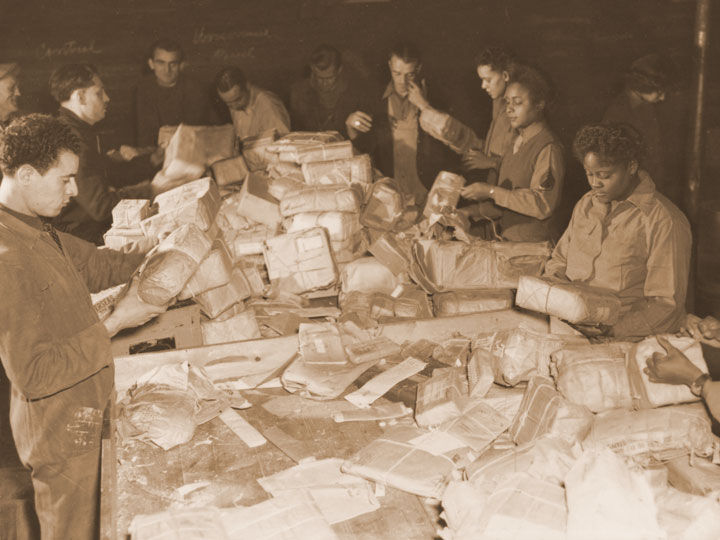
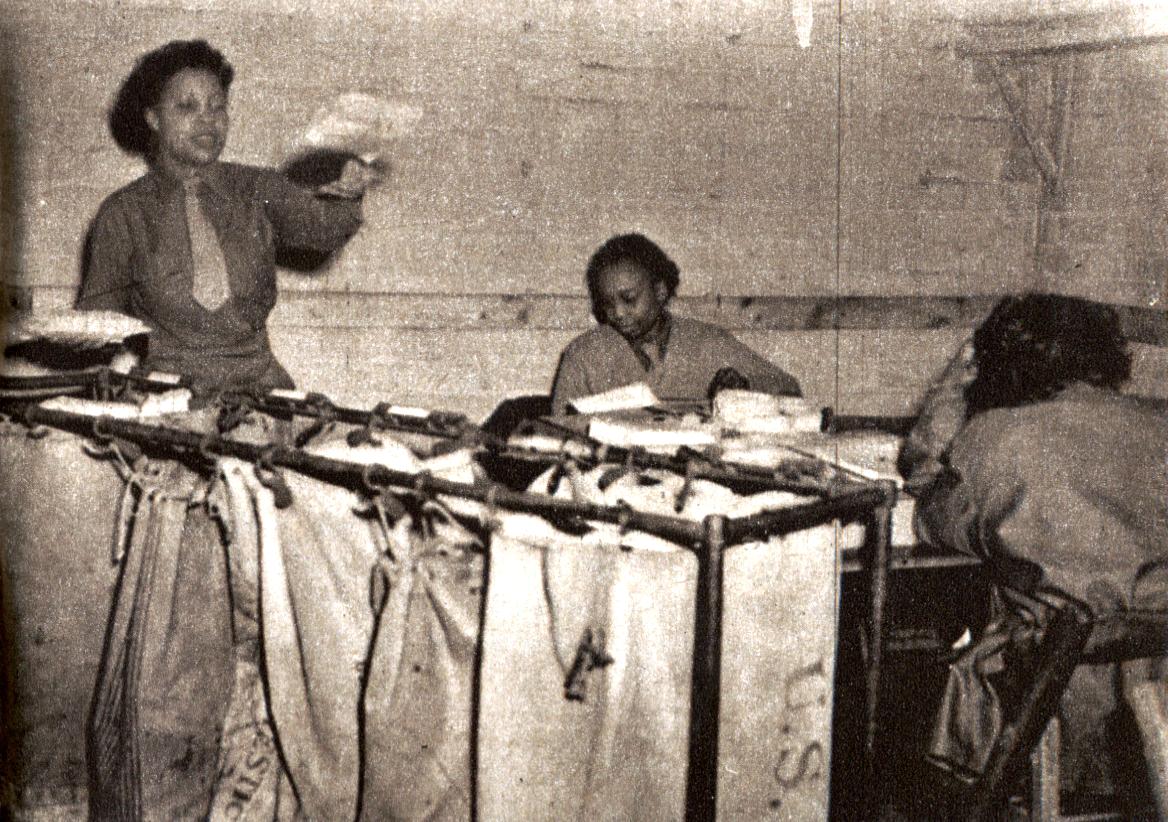

Sources
2 Treadwell, The Women’s Army Corps, pp. 113-114, 220-221, 599, 636, 640-641, and 664-668; Doris Weatherfield, American Women During World War II: An Encyclopedia, (New York: Routledge, 2010), p. 43; ”In War World II, Black Women’s Army Unit Delivered” (http://www.apwu.org/labor-history-articles/world-war-ii-black-women%E2%80%99s-army-unit-delivered) (accessed 25 February 2015); and Adjutant General – Monograph: History of the Adjutant General’s Section, HQ, European Theater of Operations, D-Day to VE-Day, p. 36.
3 Adjutant General – Monograph: History of the Adjutant General’s Section, HQ, European Theater of Operations, D-Day to VE-Day, p. 36.; Brenda L. Moore, To Serve My Country, To Serve My Race: The Story of the Only African American Wacs Stationed Overseas during World War II (New York and London: New York University Press, 1996), p. 4; Earley, One Woman’s Army, pp. 147-148; and Judith A. Bellafaire, The Women’s Army Corps: A Commemoration of World War II Service (pamphlet)(Washington DC: Center of Military History, 2008), p. 21.
4 “Neither Rain, Nor Racial Bias,” The Washington Post, 26 February 2009; Moore, To Serve My Country, pp. 98-101 and 104-105.
5 Moore, To Serve My Country, pp. 105 and 107; Earley, One Woman’s Army, p. 138 and 142; Lori Stephenson, “6888th Central Postal Battalion: Women of Courage, Tenacity & Strength: A Debt of Honor 64 Years Past Due,” Our Heritage, http://ourheritagemagazine.com/our-heritage-magazine-online/6888th-central-postal-battalion (accessed 25 February 2015); ”In War World II, Black Women’s Army Unit Delivered” (http://www.apwu.org/labor-history-articles/world-war-ii-black-women%E2%80%99s-army-unit-delivered) (accessed 25 February 2015); and Fannie Flono, “Ruth Gaddy: Pioneer, Patriot,” Charlotte Observer, 28 August 2014 (http://www.charlotteobserver.com/2014/08/28/5135536/ruth-gaddy-pioneer-patriot.html) (accessed 25 February 2015) .
6 Earley, pp. 148-154; Moore, To Serve My Country, pp. 114-115 and 120-123; George Hicks III and Dr. Carmon Weaver Hicks, “African American Women and the Military,” February 2010, Buffalo Soldiers Research Museum, http://www.buffalosoldiersresearchmuseum.org/research/women.htm (accessed 25 February 2015); Paul Courson, “African-American women’s battalion from WWII honored,” CNN, 25 February 2009, http://edition.cnn.com/2009/US/02/25/postal.battalion (accessed 25 February 2015); Stephenson, “6888th Central Postal Battalion,” http://ourheritagemagazine.com/our-heritage-magazine-online/6888th-central-postal-battalion (accessed 25 February 2015) ; and Claudia Levy, “Maj. Margaret E.B. Jones Dies: Served in Black WWII Unit,” The Washington Post, 25 April 2000, Section B, p. 7.
7 Earley, One Woman’s Army, pp. 142, 146, 155, 157, 162-164; Moore, pp. 112-113; ”In War World II, Black Women’s Army Unit Delivered” (http://www.apwu.org/labor-history-articles/world-war-ii-black-women%E2%80%99s-army-unit-delivered) (accessed 25 February 2015); Deanna Boyd and Kendra Chan, “The History and Experience of African Americans in America’s Postal Service,” Smithsonian Institution’s National Postal Museum, p. 7, http://postalmuseum.si.edu/AfricanAmericanHistory/p7.html (accessed 25 February 2015); and Stephenson, “6888th Central Postal Battalion,” http://ourheritagemagazine.com/our-heritage-magazine-online/6888th-central-postal-battalion (accessed 25 February 2015).
8 Treadwell, The Women’s Army Corps, p. 600.
9 Treadwell, The Women’s Army Corps, p. 600; Brenda L. Moore, “African American Women Who Served Overseas During World War II: Towards a Life-Course Analysis,” U.S. Army Research Institute for the Behavioral and Social Sciences, June 1994, p. 8; Earley, One Woman’s Army, pp. 107-108 and 159-162; Thomas-Lester, “Neither Rain, Nor Racial Bias.”
10 Earley, One Woman’s Army, pp. 153-154 and 156-159; and Moore, To Serve My Country, p. 134-136.
11 Bellafaire, The Women’s Army Corps: A Commemoration, p. 22; Earley, One Woman’s Army, p. 151; Moore, To Serve My Country, p. 141; ”In War World II, Black Women’s Army Unit Delivered” (http://www.apwu.org/labor-history-articles/world-war-ii-black-women%E2%80%99s-army-unit-delivered) (accessed 25 February 2015);Thomas-Lester, “Neither Rain, Nor Racial Bias;” and Stephenson, “6888th Central Postal Battalion,” http://ourheritagemagazine.com/our-heritage-magazine-online/6888th-central-postal-battalion (accessed 25 February 2015).
12 Moore, To Serve My Country, pp. 115-116; Earley, One Woman’s Army, pp. 174-175 and 184; Rhonda D. Apple, “Celebrating black women,” Pentagram, 10 February 2012 (photo caption); and Cheryl Mullenbach, Double Victory: How African American Women Broke Race and Gender Barriers to Help Win World War II (Chicago: Chicago Review Press, Incorporated, 2013), Chapter 3, “WACs Go Overseas” section (pages not enumerated).
13 Earley, One Woman’s Army, pp. 176-177, 181, and 190; Moore, To Serve My Country, pp. 126-128; Winners of Athletic Championships – 1945 report, AG 353.8 GAP-AGO, Headquarters, Theater Services Forces, European Theater, 8 November 1945, p. 14; “Volunteer Infantry Replacements” in “Reference Topics: Ethnic/Racial Groups in the Army: African Americans in the U.S. Army,” U.S. Army Center of Military History, http://www.history.army.mil/html/topics/afam/aa-volinfreps.html (accessed 26 February 2015) (for Lee’s rank and position); and Moore, To Serve My Country, p. 127.
14 Earley, One Woman’s Army, p. 189; Moore, To Serve My Country, p. 140; and the website of the American Battle Monuments Commission, http://www.abmc.gov/ (accessed 25 February 2015).
15 Moore, To Serve My Country, pp. 118-120 and 143; Earley, One Woman’s Army, pp. 197 and 202-204; Treadwell, The Women’s Army Corps, p. 600; and U.S. Forces Paris Telephone Directory, Issue No. 8, 8 November 1945, p. 62.
16 Stephenson, “6888th Central Postal Battalion,” http://ourheritagemagazine.com/our-heritage-magazine-online/6888th-central-postal-battalion (accessed 25 February 2015); Moore, “African American Women Who Served Overseas,” p. 8; and Moore, To Serve My Country, p. 64; and Report of the General Board, United States Forces European Theater, Study of Women’s Army Corps in the European Theater of Operations, Study Number 11, Volume 1, p. 128 (published 1 December 1945 according to the U.S. Army Heritage and Education Center Digital Collections catalog entry, http://cdm16635.contentdm.oclc.org/cdm/ref/collection/p16635coll14/id/34111, accessed 26 February 2015).
17 Moore, To Serve My Country, p. 6 and 199-201.
18 Charity Adams Earley, One Woman’s Army: A Black Officer Remembers the WAC (College Station, Texas: Texas A&M University, 1989 ); Brenda L. Moore, To Serve My Country, To Serve My Race: The Story of the Only African American Wacs Stationed Overseas during World War II (New York and London: New York University Press, 1996); and “Invisible Warriors: African American Women in World War II,” website at http://invisiblewarriorsfilm.com/warriors.php (accessed 25 February 2015) (the film has yet to be distributed as of February 2015).
19 Richard Goldstein, “Charity Adams Earley, Black Pioneer in Wacs, Dies at 83,” The New York Times, 22 January 2002, http://www.nytimes.com/2002/01/22/us/charity-adams-earley-black-pioneer-in-wacs-dies-at-83.html (accessed 26 February 2015); Jacqueline Jones Royster, Profiles of Ohio Women, 1803-2003 (Athens, Ohio: Ohio University Press, 2003), p. 134; Jennifer Lenhart, “Charity Adams Earley – World War II” in “Six Military Women and Six U.S. Wars,” The Washington Post, 18 October 1997, Section A, p. 13; United States Army Women’s Museum, Fort Lee, Virginia, website, http://www.awm.lee.army.mil (accessed 25 February 2015); National Archives for Black Women’s History (of the Mary McLeod Bethune Council House National Historic Site), website, http://www.nps.gov/mamc/learn/historyculture/mamc_nabwh.htm (accessed 25 February 2015); online catalog of the Library of Congress with finding aid for the Charity Adams Earley Papers,
http://findingaids.loc.gov/db/search/xq/searchMfer02.xq?_id=loc.mss.eadmss.ms009089&_faSection=overview&_faSubsection=did&_dmdid= (accessed 25 February 2014); and “A brief history of the Charity Adams Earley Girls Academy,” Dayton Public Schools, http://home.dps.k12.oh.us/documents/contentdocuments/document_23_5_1098.pdf (accessed 25 February 2015).
20 Paul Courson, “African-American women’s battalion from WWII honored,” CNN, 25 February 2009, http://edition.cnn.com/2009/US/02/25/postal.battalion (accessed 25 February 2015); Avis Thomas-Lester, “Neither Rain, Nor Racial Bias,” The Washington Post, 26 February 2009; “In War World II, Black Women’s Army Unit Delivered: WACs Cleared Massive Backlog, Sped Mail to Soldiers,” The American Postal Worker, January-February 2012, and http://www.apwu.org/labor-history-articles/world-war-ii-black-women%E2%80%99s-army-unit-delivered (accessed 25 February 2015); “Alyce Dixon, Women’s Army Corps, 1943-1946,” Washington DC Veterans Affairs Medical Center, U.S. Department of Veterans Affairs, http://www.washingtondc.va.gov/docs/Alyce-Dixon.pdf (accessed 25 February 2015); and “Ms Alyce Dixon Turns 107,” Washington DC Veterans Affairs Medical Center, U.S. Department of Veterans Affairs, 22 September 2014, http://www.washingtondc.va.gov/features/Ms_Alyce_Dixon_Turns_107.asp (accessed 25 February 2015). On 27 October 2014, Alyce Dixon had a special visit with President Obama in the White House Oval Office (Compilation of Presidential Documents, Digest of Other White House Announcements, Administration of Barack Obama, 2014, Office of the Federal Register, National Archives and Records Administration, 31 December 2014, (http://www.gpo.gov/fdsys/pkg/DCPD-2014DIGEST/pdf/DCPD-2014DIGEST.pdf -- accessed 25 February 2015).
